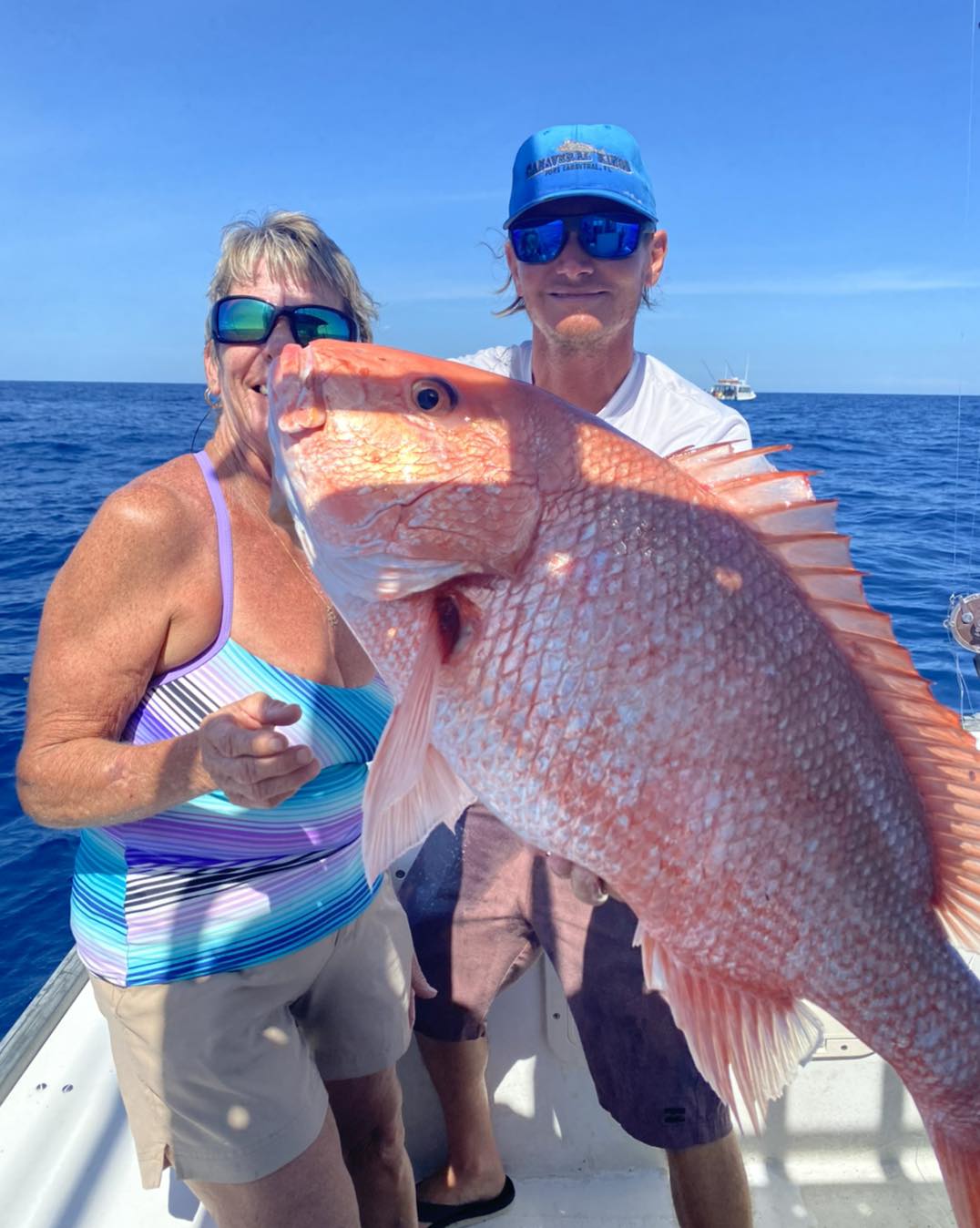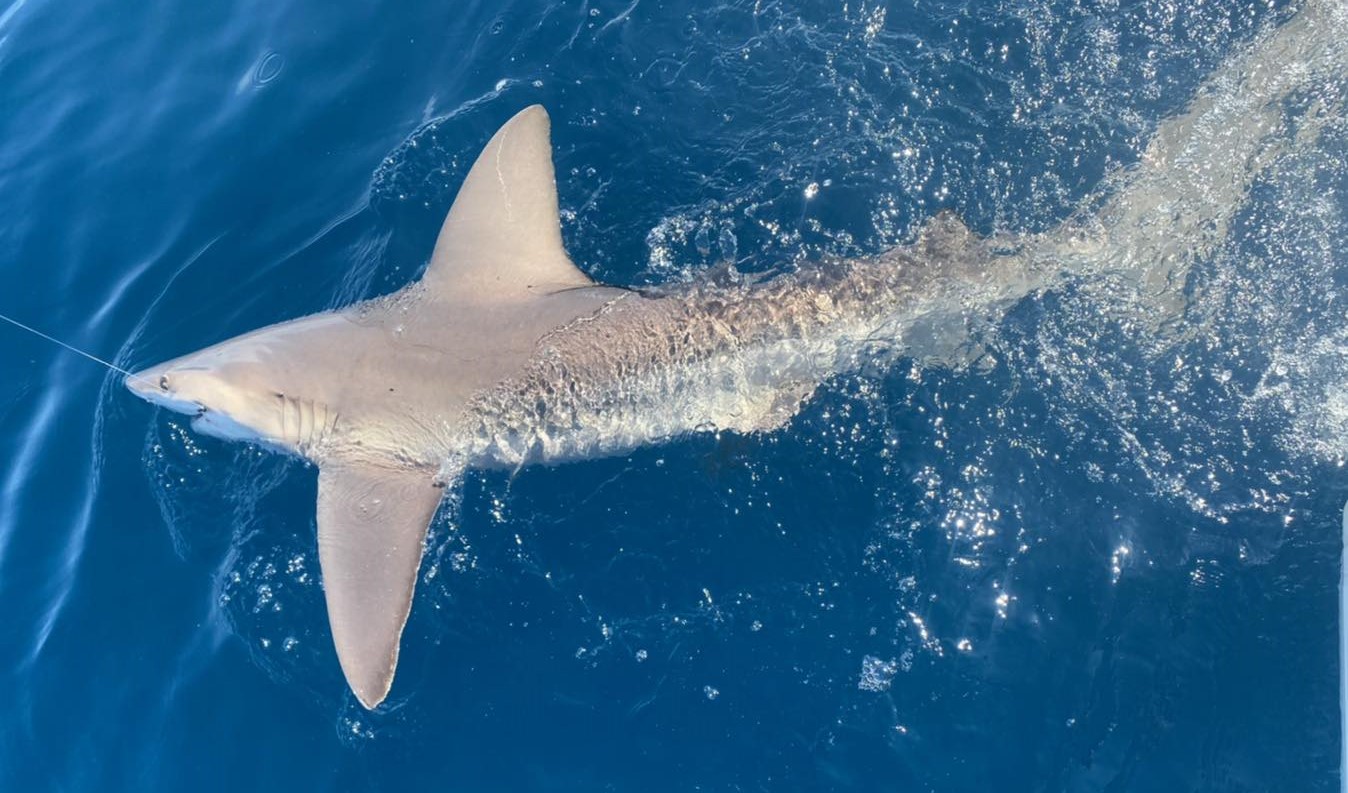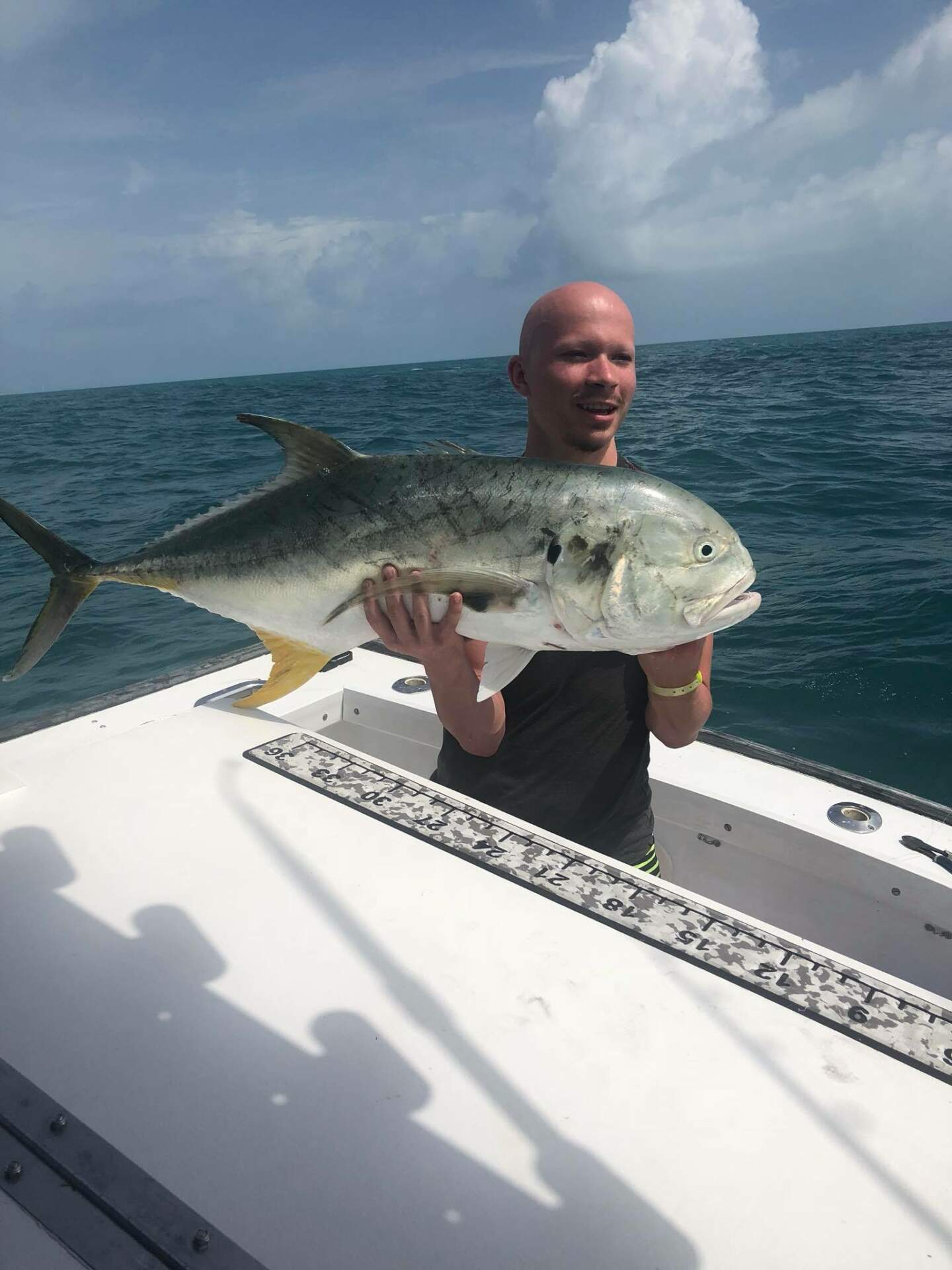Last Updated on April 4, 2025 by Eric
Cape Canaveral offers one of the most active and varied offshore fisheries on Florida’s east coast. During the summer, warm water temperatures and more stable weather patterns make it easier for fishermen to reach a broad range of productive zones. A typical summer offshore trip here might involve trolling for pelagic fish in open water, bottom fishing near reefs and ledges, and reacting to surface activity around floating debris or bait schools. The variety and reliability of the bite make this season one of the most productive and accessible times to fish offshore from this region.
What to Expect Offshore in the Summer
Summer offshore fishing in Cape Canaveral is shaped by consistent weather, warm surface temperatures, active bait movement, and the presence of seasonal fish that are either migrating through or feeding heavily before fall transition. From June through early September, the ocean stabilizes after the irregular fronts of spring. This creates a stretch of relatively predictable conditions that opens up a wide portion of the fishery to anyone able to make the run.
One of the most significant shifts in summer is the clarity and layering of the water. Surface temperatures hold in the high 70s to low 80s, which creates strong thermoclines in the 50 to 120-foot range. Fish often hold along these temperature boundaries, particularly species that move vertically through the water column like snapper, amberjack, and grouper. These layers can be identified on sonar, and they often show up more clearly in summer than in cooler seasons.
Bait movement also becomes more visible and concentrated. Schools of menhaden, threadfin herring, sardines, and blue runners tend to gather around structure, weed lines, or points where two water masses meet. Their presence draws in predators, including king mackerel, mahi-mahi, and blackfin tuna. Spotting birds, color changes, and bait flipping on the surface are all strong signs that game fish are nearby.
Another defining feature of summer offshore fishing is the presence of long weed lines and floating debris. These are formed by stable current lines, light winds, and the steady push of the Gulf Stream. Weed lines often stretch for hundreds of yards and create visible edges that hold bait, triggerfish, mahi-mahi, and even tripletail or wahoo depending on their position and proximity to depth changes.
Because of the longer daylight and fewer cold fronts, summer weather windows are more consistent, especially for morning departures. Afternoon thunderstorms are common, but most full-day offshore runs can be completed before the weather becomes dangerous. Combined with season openings for species like red snapper and gag grouper, summer is a high-yield time to plan offshore trips.

Distance and Depth: Where the Fish Are
Most summer offshore fishing off Cape Canaveral takes place between 10 and 50 miles from shore. Fish tend to hold in bands based on depth and structure. Nearshore activity can include bait schools and kingfish within 15 miles, while bottom species like snapper and grouper concentrate around ledges, artificial reefs, and live bottom starting in the 70- to 100-foot range.
Farther offshore, in depths from 120 to 250 feet, the water is clearer and more influenced by the Gulf Stream. This zone supports a variety of pelagic species such as mahi-mahi, sailfish, wahoo, and blackfin tuna. Color breaks, temperature shifts, weed lines, and bait concentration all help guide where to stop. Many fishermen will troll along rips and edges in this deeper water while keeping an eye out for debris or surface activity that signals a concentration of fish.
The most productive offshore trips are usually flexible, moving between depth ranges based on water condition, bait presence, and how the bite is unfolding that day.
King Mackerel
King mackerel are common offshore in summer and can be caught from depths as shallow as 40 feet to as deep as 100 feet, often around structure that holds bait. They are long, silver fish with narrow jaws and a deeply forked tail, capable of fast, sustained runs when hooked.
They are usually caught by slow-trolling live baits like pogies (menhaden), blue runners, or threadfin herring. Stinger rigs made with wire leaders are important due to their sharp teeth and tendency to short-strike baits. Ribbonfish are also a highly effective bait, especially when targeting larger kingfish. Most summer fish range between 10 and 25 pounds, with occasional catches exceeding 40 pounds when conditions are right.
Mahi-Mahi
Mahi-mahi, also known as dolphin, are bright green, yellow, and blue fish often found near weed lines, floating debris, or temperature breaks offshore in 120 to 250 feet of water. They are fast swimmers, aggressive feeders, and are commonly caught by trolling small skirted lures or rigged ballyhoo.
Once one fish is hooked, others in the school often follow it toward the boat. Keeping a pitch rod ready with cut bait or a jig can turn a single mahi into a multi-fish catch. They are easily identified by their flat heads, long dorsal fins, and vibrant coloration, which fades quickly after death. Mahi are excellent table fare and a staple target during the summer season.

Blackfin Tuna
Blackfin tuna are the smallest of the tuna species found in this region but still offer a strong fight and high-quality meat. They are typically found farther offshore in 150 to 250 feet of water, often near surface bait schools or under birds.
They are caught by trolling with small feathers, cedar plugs, or rigged baits. Blackfins feed aggressively and are often located by watching for surface busts or diving birds. Tuna should be iced immediately after catching to preserve meat quality. Average size ranges from 10 to 25 pounds during the summer months.
Sailfish and Wahoo
Sailfish are occasionally caught offshore during the summer, especially in clean water near color changes or weed lines. They have long bills and a tall dorsal fin that resembles a sail, and are usually seen in water deeper than 150 feet. They are caught by trolling ballyhoo or artificial lures rigged for pelagic species. Sailfish are known for acrobatic jumps and fast runs after hookup.
Wahoo are built for speed and are most often caught on high-speed trolling rigs or by using planers to bring lures down into cooler water below the surface. They are long, torpedo-shaped fish with dark vertical stripes. Wahoo strikes are explosive and often result in a strong first run. They are typically found near drop-offs or areas where temperature changes occur. Summer catches are less common than in cooler months but still possible on the right days.
Cobia and Other Surface-Oriented Fish
Cobia are often spotted swimming near the surface, especially around floating debris, buoys, or large rays. They have a brownish body, white belly, and a broad, flat head. Cobia are caught by sight-casting jigs, live bait, or cut bait when they’re near the boat or visible on the surface. They are known for strong runs and unpredictable movement after hookup.
Tripletail are also surface-oriented and often found floating near weed lines or structure. They have a dark, round appearance and are usually caught using live shrimp or soft plastics. Tripletail often appear stationary near buoys and flotsam, making them good sight-fishing targets.
Barracuda are long, silver fish with prominent teeth and aggressive strikes. They are commonly seen around reefs and wrecks but will also cruise near bait schools offshore. While not a primary target, they are frequently caught incidentally and can be handled with wire leader to avoid cutoffs.
Crevalle jack and other large jacks may show up offshore as well, especially when bait is dense near structure. They are aggressive feeders and powerful fighters, often caught on the same gear used for other surface-oriented fish.
Snapper Species
Snapper fishing plays a central role in summer offshore trips out of Cape Canaveral. This time of year offers access to several species—most notably red snapper, mangrove snapper, and vermilion snapper—each with different behaviors, size limits, and preferred habitats. Regulations limit how and when some of these fish can be kept, but summer often brings short windows for legal harvest, especially for red snapper.
Red snapper are commonly found on natural bottom, ledges, and artificial reefs in 80 to 160 feet of water. They are easily identified by their red-pink coloration, relatively deep body, and short dorsal spines. These fish feed aggressively in summer and will take a variety of offerings including cut bait, squid, and live pinfish. Strong conventional gear with enough backbone to pull them off the bottom is essential, as large red snapper will dive immediately after being hooked.
Mangrove snapper, also called gray snapper, are more structure-oriented and often hold tight to wrecks, pylons, or hard ledges. They’re typically smaller than red snapper but have keen eyesight and can be more bait-selective. Light fluorocarbon leaders and live bait such as shrimp or small pilchards often work best, especially in clear water.
Vermilion snapper are typically caught in deeper water beyond 120 feet. These smaller, slender fish school over reefs and ledges and are usually taken on double-hook rigs using squid or cut bait. While they don’t grow as large as other snapper species, they are excellent eating and can be caught in good numbers when schools are located.
Fishing for snapper requires attention to depth, bait type, and structure, but summer conditions often make all three species accessible within a single trip.

Grouper Species
Grouper are another major target during summer offshore runs and often overlap with snapper habitat in terms of structure and depth. The most common species encountered are gag grouper and scamp grouper, both of which are structure-bound predators that prefer live or natural reef bottom in 90 to 200 feet of water.
Gag grouper are strong, aggressive fish that grow to over 30 pounds. They are typically caught using large live baits such as pinfish, grunts, or tomtates, dropped on heavy-duty bottom rigs with enough lead to stay tight to structure. These fish are known for their ability to dive into rock holes or reef crevices immediately after being hooked, making it critical to pull hard in the first seconds of the fight. Heavy rods and locked-down drag settings are often necessary to turn large fish away from cover.
Scamp grouper are smaller and more delicate but are highly prized for their mild, flaky meat. They tend to hold slightly deeper than gag grouper, often on sloping bottom near ledges or in reef valleys. Scamp will eat both live and dead bait, but live sardines or smaller pinfish often produce the best results. Because they are less aggressive than gags, hook placement and leader presentation become more important when targeting them directly.
Grouper fishing in summer is strongly influenced by current, bait presence, and angling pressure. Finding isolated structure or less-pressured spots can make a noticeable difference in catch rate. Regulations for grouper change often, so checking open seasons and bag limits before launching is critical to staying compliant and maximizing your day offshore.
Less Common but Possible
In addition to the primary species, a variety of less common fish may show up on summer offshore trips out of Cape Canaveral. These fish are not typically the focus of a trip, but they are worth understanding for proper identification and handling.
False albacore, also known as little tunny, often appear near bait schools or surface busts. They resemble small tuna but are not considered good table fare due to their strong flavor. However, they fight hard and will readily hit trolled lures or small jigs, especially near diving birds.
Almaco jacks are deep-bodied reef dwellers that are often caught incidentally while targeting amberjack or grouper. They have a thick profile and powerful tail, and are most often taken on live bait dropped over wrecks or ridges in 120 to 200 feet of water. Almaco jack are sometimes mistaken for amberjack but have a softer, more manageable fillet for the table.
Triggerfish occasionally show up on the same reefs targeted for snapper. Their small mouths and cautious bites make them difficult to hook without small, sharp hooks and cut squid. When in season, they are excellent eating, with firm, white fillets. However, harvest rules often close these fish during the summer, so checking regulations before keeping one is essential.
Barracuda may also be caught incidentally, especially when trolling for kingfish or mahi-mahi. These fish strike aggressively and often cut lines with their sharp teeth if wire leaders aren’t used. While not a preferred food fish for most, they are easily recognized by their long body, fang-like teeth, and greenish-gray back.
Sharks
Sharks are a regular part of summer offshore fishing, particularly when fishing near reef systems or large schools of bait. Commonly encountered species include blacktip, spinner, sandbar, and occasionally hammerhead or dusky sharks. While many are released, some are kept when regulations allow.
Sharks are typically caught on heavier tackle using large cut bait. Wire leaders are essential to avoid bite-offs. Most shark encounters happen during bottom fishing or when drifting baits near the surface. Proper dehooking tools and awareness around the rail are important for safe handling. If not keeping a shark, cutting the line close to the hook and releasing it quickly is best for the fish and for crew safety.

Weather, Open Seasons, and Planning Ahead
Planning a productive offshore trip in the summer begins with watching the weather and knowing the regulations. Summer mornings often offer calm seas, but afternoon thunderstorms are common. Checking marine forecasts for wind, swell, and lightning risk should be part of every pre-launch routine.
Some of the most popular species targeted in summer—especially red snapper and gag grouper—have restricted harvest windows. Red snapper may only be open for a few weekends during July, and bag limits are strictly enforced. Triggerfish, amberjack, and other reef species also have staggered openings and closures throughout the season. Knowing those dates in advance prevents wasted effort and helps with trip planning.
Storm planning also matters. Having a route back to port and a weather alert system on board can help avoid dangerous conditions. Many summer storms build quickly and move fast. Departing early, finishing fishing by early afternoon, and staying within a reasonable range of the inlet improves safety and increases the odds of a full day offshore.
Understanding when you can keep what, and how to time your trips around good conditions and open seasons, leads to more productive and less stressful fishing. Trip timing in summer is less about luck and more about preparation.
Gear and Techniques
Trolling Gear for Pelagics
-
Rod class: 20- to 30-pound class rods
-
Reels: Conventional reels with high line capacity
-
Spreads: Skirted baits, rigged ballyhoo, or artificial lures
-
Leaders: Wire for kingfish and wahoo, mono for mahi and sailfish
Bottom Fishing Setups
-
Main line: 50- to 80-pound braid
-
Leaders: Fluorocarbon, typically 40 to 80 lb test
-
Hooks: Circle hooks (often required by regulation)
-
Rigs: Knocker rigs, three-way swivels, sliding sinker rigs
-
Optional: Electric reels for drops beyond 200 feet
Live Bait Applications
-
Deployment: Flat lines, downriggers, or basic sinker rigs
-
Common baits: Blue runners, pinfish, threadfins, ribbonfish
-
Additional rigs: Stinger rigs for kings; sabiki rods for bait collection
Supporting Tools That Matter
-
Dehookers and venting tools
-
Gaffs for heavier fish
-
Aerated live wells or bait pens
-
Quality ice and insulated fish storage
Approach
Being equipped for multiple methods—trolling, bottom fishing, sight casting—is often necessary to adapt to changing offshore conditions. Successful trips rely not just on location, but on having the gear and rigging ready to match the species encountered.
Seasonal Bait Movements and Patterns
Offshore fish in summer follow bait, and knowing what to look for can lead you straight to them. Common bait types off Cape Canaveral include:
-
Menhaden (pogies): Found nearshore in large surface schools, especially around structure or reef edges. These often bring in kingfish, sharks, and cobia.
-
Sardines and threadfins: Seen offshore around reefs, ledges, and color breaks, especially in stable water.
-
Flying fish: Common in clean blue water, usually near weed lines or floating debris. Mahi and tuna feed around them.
-
Blue runners: Found near buoys or hard structure. Often caught on sabiki rigs and used for live bait.

When the Water Is Right, So Is the Fishing
Summer offshore fishing out of Cape Canaveral gives you time on the water that’s actually worth the fuel. The distances are real, and the effort adds up—but this season gives you the best chance of seeing that work pay off. When the bait is holding and the weather lets you move, the fish are there, and the variety is wide enough to justify staying out all day.
This is also the time when experience starts to matter. Knowing what’s likely to show up, how to adjust when conditions shift, and where to set your pace early in the run can separate a full box from a quiet ride back in. The water isn’t just active—it’s active in a way that rewards preparation. If you bring the right gear, move with intent, and keep a plan in motion, summer will usually give you the fish. But it won’t hand them over for free.
If you’re ready to fish with someone who knows the season and the water, book your trip with Canaveral Kings. We’re running hard while the fishing is at its best.

